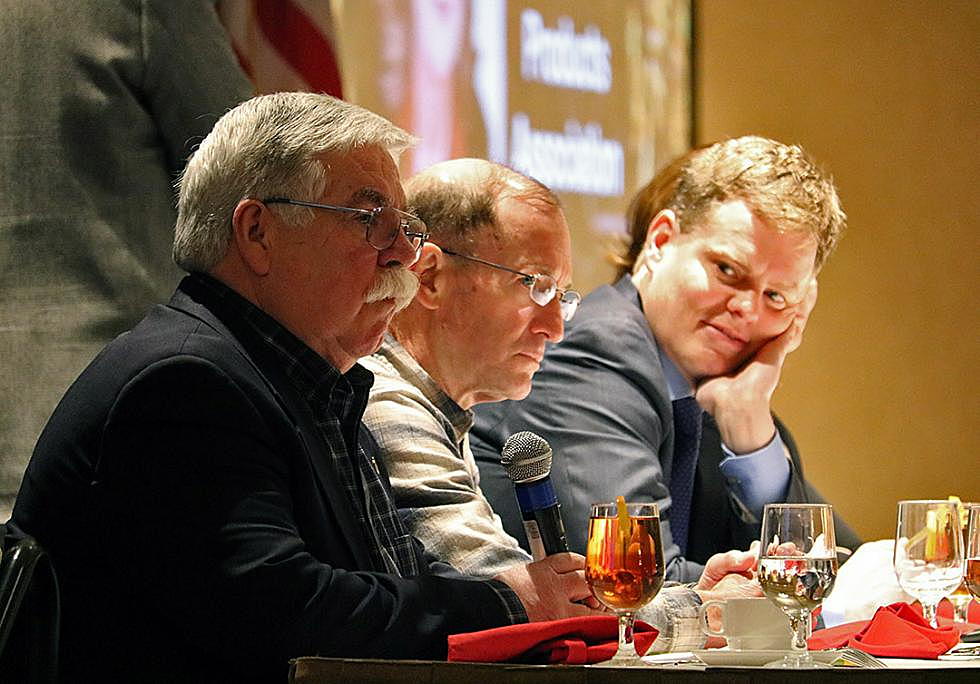
Fire suppression behind regular large fires; timber industry wants more wood product
Fire suppression efforts over the past 118 years have left forests across the Northern Rockies thick and overgrown, leading to repeated large-scale incidents that were once considered rare, several industry experts said on Tuesday.
“Since the end of the Ice Age, fire has been a principal disturbance in the development of our ecosystems,” said Jack Cohen, a retired research scientist with the U.S. Forest Service. “But since European discovery and settlement, we have dramatically reduced the amount of fire in our landscapes.”
The Missoula Chamber of Commerce selected the topic of fire and its impacts on the local economy – and the wood products industry – as the subject of the 2018 State of Missoula Commerce Report.
Presented under the banner of “Rising from the Ashes: Growing out of the 2017 Fire Season,” the topic signaled the chamber's desire to rejuvenate the wood products industry, one that also looks to return to its past prominence.
“Much of the timber industry in the West is gone, and once it's gone, it usually doesn't come back,” said Julia Altemus with the Montana Wood Products Association. “Starting a mill is very capital intensive. Without the timber infrastructure being here, your fire seasons will be worse.”
Altemus said the industry harvested roughly 367 million board feet of timber across the state last year. The head-rate capacity, or what Montana's remaining lumber mills could handle, is around 500 million board feet.
She blamed the reduction on a number of factors including the recession, environmental lawsuits, unbalanced trade with Canada and federal policies.
“About 30 years ago, when I got started in this industry, Montana was producing over 1 billion board feet of timber per year,” she said. “The head rate, up to even 10 years ago, was 800 million board feet. So we've gradually decreased, which is not good for Montana's economy and certainly not good for the forest.”
Altemus, who didn't mention climate change and fire suppression as possible causes for today's increasingly large and costly fires, said roughly 67 percent of the state's timber base is federally owned. She said the industry relies on its federal partners to ensure it gets fiber into mills.
She said too little timber is being allocated to local companies for harvesting.
“Montana burned just under 1.2 million acres in 2017,” she said. “That's a lot of timber that's been lost, a lot of landscapes lost and a lot of wildlife habitat lost.”
But Cohen and Tim Love, a retired Seeley Lake district ranger with the U.S. Forest Service, said it's unlikely that society can log its way out of a problem it created after more than a century of suppression efforts.
Love, who joined the Forest Service in 1975, said the fire environment changed dramatically during his tenure with the agency. At one point in his career, a 5,000-acre fire was considered large. Now, fires of 50,000 acres aren't uncommon.
“You hear about all kinds of news, like warmer and drier conditions,” said Love. “People can debate why that is, but it is. There's declining snowpack, especially at lower elevations, declining runoff and changing fuels due to fire suppression. More forests have grown, there's more trees per acre and we're dealing with a lot more fuel.”
While wildfires are inevitable, both the state and federal government have nearly broken the bank fighting them, often to the neglect of other budget needs. Along the way, communities haven't grown any closer to accepting fire as part of the natural landscape.
From 2005 to 2015, Cohen said, the total amount burned stood at roughly 9.6 million acres per year. But that's a fraction of what would have occurred naturally without human interference.
“We'd be looking at about 44 million to 106 million acres per year burned,” said Cohen. “Our current average acres burned is 10 times less than what burned before. The key here is that fires that historically occurred did so under different conditions.”
Historically, Cohen said, most fires burned during less than extreme conditions. But it's those very conditions that present the most optimal suppression window.
Repeated over decades, low-intensity fires have been snuffed, cutting out the hand of Mother Nature to manage the forests naturally. Now, when faced with extreme conditions, fires come with greater consequences.
“We're faced with a wildfire paradox,” said Cohen. “Our management policy of wildfire exclusion has increased the potential of more intense and expensive wildfires during extreme conditions. We're actually working against ourselves in this regard.”
